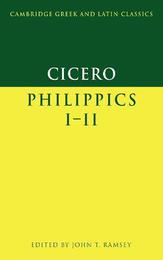
|
Cicero: Philippics I-II
Paperback / softback
Main Details
Description
This edition is the first since J. D. Denniston's of 1926 to present the Latin text of and a commentary on the First and Second Philippics, two of the most polished orations in the Ciceronian corpus. These speeches, which were composed less than six months after the murder of Julius Caesar in March 44 BC, offer a scathing account of the early years and the rise to power of Mark Antony, Caesar's chief lieutenant. The period covered by these speeches (roughly 63-44 BC) is an important one because the Roman state was in transition from Republic to Empire. The Second Philippic not only gives us Cicero's assessment of his own political career and place in Roman history from a perspective late in life, but it also provides a vivid eyewitness account of how the dominance first of Julius Caesar and later of Mark Antony was shifting the locus of power from the Senate and Roman aristocracy to a single dynast.
Author Biography
John T. Ramsey is Professor of Classics at the University of Illinois at Chicago. His publications include two commentaries on Sallust and Cicero and, with A. Lewis Licht, a monograph entitled The Comet of 44 BC and Caesar's Funeral Games (1997; ISBN HB 0788 502735; PB 0788 502743).
Reviews'All the extras which I like are here - the map of the roman world ... a map of the centre of Rome ... and a calendar summarising the year 44 which is surely vital for such a work'. JACT
|